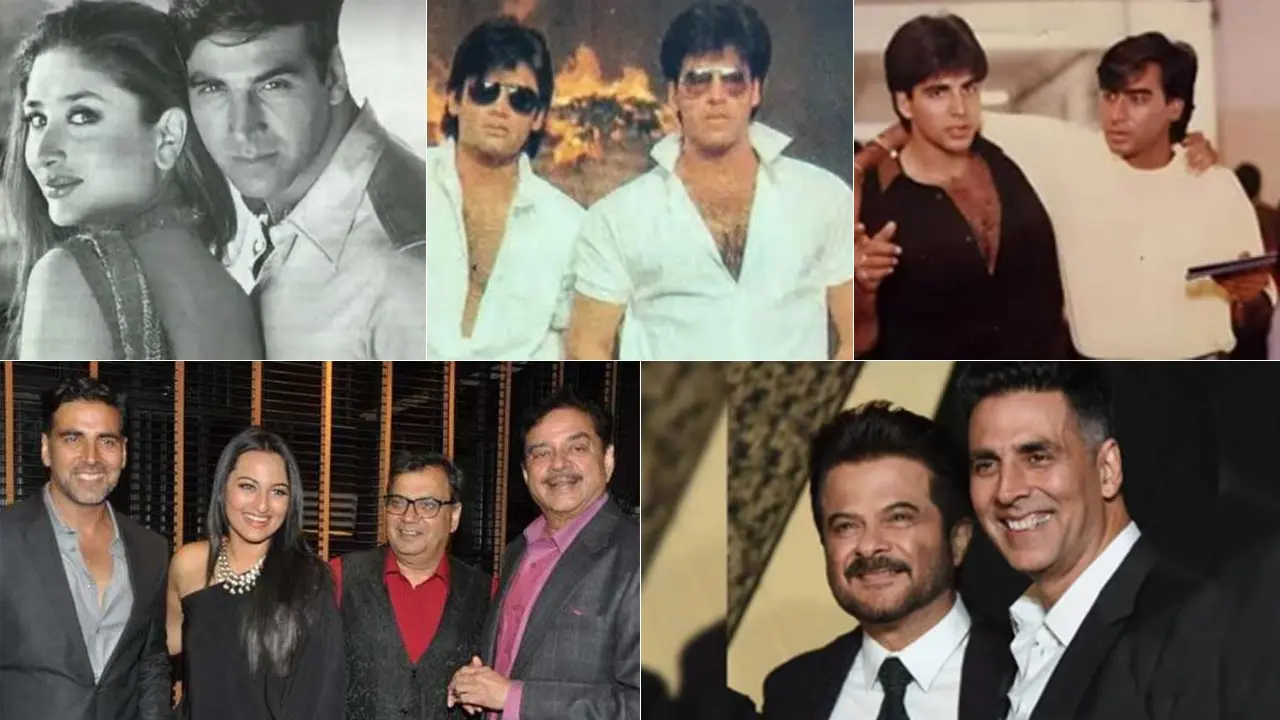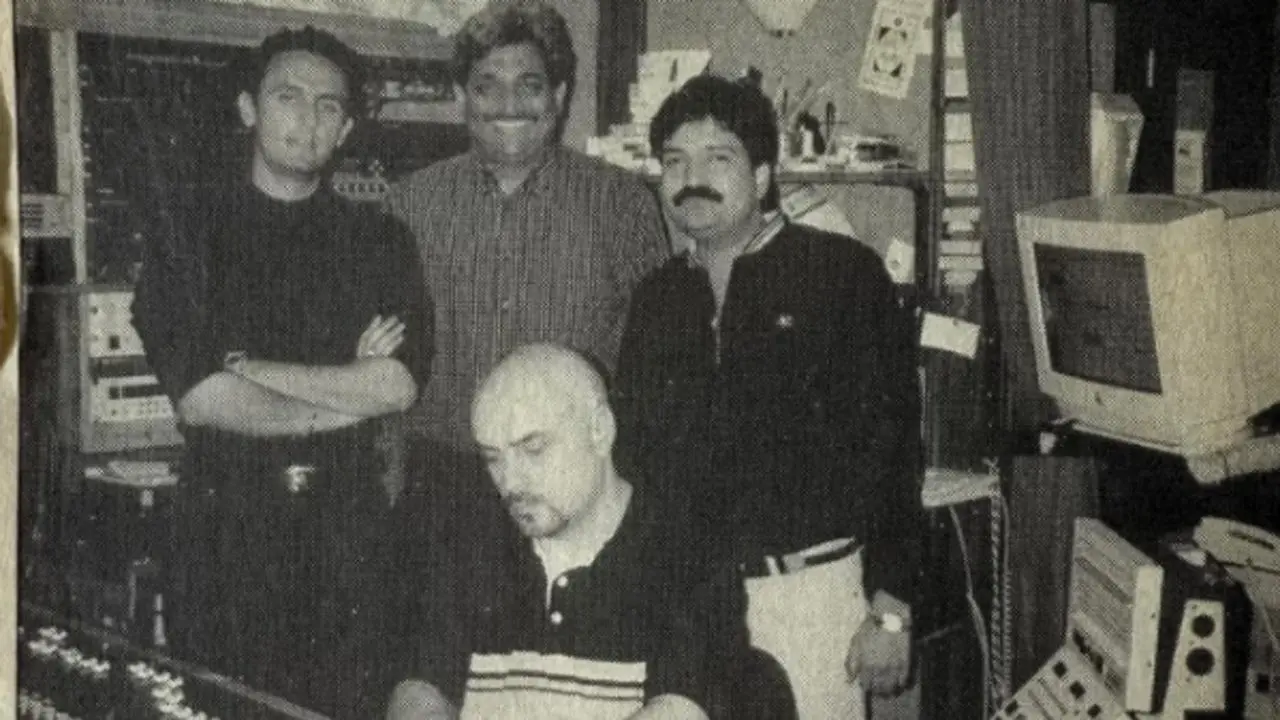Shiladitya Bora on perception towards independent films: `Don`t need support`

Producer-distributor Shiladitya Bora is not new to film festivals, yet every international premiere feels a first, he says. More so for an independent producer, whose road to release for any film starts with a festival screening. This time, Bora is at the Toronto International Film Festival (TIFF) with Huma Qureshi-led Bayaan. A thriller drama, directed by Bikas Mishra, that Bora says shatters the stereotype of an independent film. "Bikas and I wanted to change the perception of an indie film with Bayaan. It`s entertaining, engaging and audience-friendly," he says. Bayaan is also a turning point in Bora`s trajectory. "It is the beginning of phase two of my production house, Platoon One Films. We want to make lesser but bigger films now."
Excerpts from the interview:
Bayaan has had quite a journey, from being rejected by most production houses, casting delays to now premiering at one of the most prestigious platforms in the world, how reassuring does it make you about your own belief in a film?
Everyone in life will go through these ups and downs. Some days you are jubilant and feel, "Duniya jeet lenge." The next day, something happens, which makes you think, ‘Oh God! What do we do now?’ We went through these phases. In fact, when the film didn’t get selected at Cannes (Film Festival), our morale dipped slightly because Bikas and I had been trying for it for days. We thought, "Now let us leave it to the universe." TIFF premiere brings back our motivation, and reaffirms are intuition about this story
At this point, I also want to talk about how Bayaan is different from other independent films.
Go on…
In India, people think independent films mean low production value, boring art house films. So, Bikas and I wanted to change this perception with Bayaan. You look at a Martin Scorsese film. It will be entertaining, engaging, and audience friendly. Yet, win awards and premiere at festivals.
Bayaan is an audience film first. So, we knew it had to look like that scale and treatment wise. I often hear filmmakers say, ‘Audience ko film samajh mein nahi aayi.’ There’s this intellectualism that many filmmakers exhibit. But we didn’t want to get into that. If the audience doesn’t understand our film, then we have failed as makers. We don`t want to sit on a high chair, thinking, ‘We made a great film but the audience didn’t turn up.’ We are very confident about Bayan, and people we have shown it to have told us that it’s a very audience film.
Also, on a global level, barring The Lunchbox (2013) and All We Imagine As Light, we haven’t produced a truly global film, one that has released in many countries and audiences from all over the world have accepted it. So, TIFF will be effective in that context. It will open doors for us. In the last one month alone, we have gotten so many inquiries from top-notch distributors of the world.
It’s been eight years to Platoon One Films, one of the biggest success stories as far as independent filmmaking is concerned in India. When you look back, do you feel you are where you imagined Platoon One Films to be?
We practically started from zero, in 2017. At that time, it was very important for us that we became maybe not cash rich, but we should have our own corpus so that we could develop and do films on our own. What we knew was distribution. I had gained the experience of distributing films during my stint with PVR. So, initially, we distributed films left, right and centre. That got us some funds. Then we wanted to produce a film, so the first film we did was Yours Truly (2018). I made it with two of my friends. It was produced at a very small budget and all the actors did it at a nominal fee. Yours Truly premiered at Busan International Film Festival, and we got good reviews. Zee (Zee Entertainment Enterprises Limited) bought the film and we made profit on it.
Then, I produced another film, Picasso (2021), which was in Marathi. It won a National Award and it became Amazon Prime`s first direct-to-digital Marathi acquisition. We made some money there. And on the side, distribution went on. Slowly, we made five-six films and reached the periphery of the system. We existed now, but at the same time, we hadn’t made any major dent in the system. There were 10 other production houses trying like us.
Now, with Bayaan, our phase two has started. Our upcoming films are comparatively bigger in scale, production value, and casting. They are more mainstream in approach, more audience friendly. What we have realised with Bayan is that you cannot plan a successful film. A successful film is the result of a lot of things coming together. It happens here that the director or the actor or the producer gets all the credit, but a film is collaborative. It’s like 100 people`s effort coming together at the right time. It is a bit cosmic.
We want to reduce the number of productions and focus on quality films, which have gone through a proper development process, because it takes time. Sometimes, I get excited on the premise, we do the film and later realise, ‘Where are we stuck?’ So, we will have to give proper time to development and scripting. We also want to amp up the distribution business, which is our bread and butter. We want to get into the distribution of international films. In the last couple of months, we have tried to strengthen our relationship with exhibitors so that our films get more support. The results are starting to show.
The important question is, how can we make the independent film system sustainable. One thing I don`t like at all is when people say, ‘Support this independent film.’ I don`t need support. I don`t need your sympathy. You should watch our film because it is good. No one has put a gun to our head and told us to make an independent film. So, the trailer, the campaign, and the film have to be good enough, so that, organically, you should want to watch it. If you are making people watch the film, that is not sustainable. It is okay for a film or two. But it can`t go on like this.
This is quite a departure from the perspective shared by, not every, but many independent artistes, who openly lament about the apparent lack of audience support and even say that the audience is letting them down.
I find it hilarious when people write, ‘Do yourself a favour and watch this film.’
But this pragmatic mindset about filmmaking that you seem to have, is it rare to find in the independent film community?
Our definition of independent film in India is perhaps a little incorrect. Anything which is not mainstream is considered independent in India. An independent film is one that’s independent in financing and its thinking. Here, independent films are anything which, for the lack of a better word, come from the parallel cinema world, or look low budget, and a little on the treatment-wise art house. These are wrong notions.
Like, Tumbaad is a great example of an indie film. It is entertaining, engaging, high on craft and production value. Although it got studio support later, it is still a very good example of the kind of independent films we all should strive to make. One which the audience should be organically excited to watch.
I have also realised that a lot of independent filmmakers or production houses think that corporates and theatres are their enemies and will give them bad show timing. It`s not like that. The thing is that they are also here for business. I agree that sometimes there is a lot of pressure, and you may not get that perfect 9 pm slot. But if any film performs and shows a little bit of growth, it will get better showcasing. Things are much better in India right now. 10-15 years ago, there was such a huge gap between indie films and theatre exhibition. Those films were shown only in festivals, and never reached the cinemas.
Recently, Ghich Pich released in theatres, it is still in cinemas. Earlier, Ghode Ko Jalebi Khilane Le Ja Riya Hoon played in cinemas for 56 days. We need to come out of the victim mentality that the whole world is against us. If we have a more solution-oriented approach, things will improve a lot.
Before Platoon One Films, you were going strong as the CEO of Drishyam Films, serving executive producer on titles like Dhanak (2015), Masaan (2015), and Newton (2018). After these milestone films, what made you wrap your journey up at Drishyam Films?
There are many versions of why I quit Drishyam, but no one really knows. In 2014, I left my job at PVR, and went to Sri Lanka, to work on a film, titled Mindfield, on the Sri Lankan civil war. I wanted to direct it. When Manish (Mundra, Drishyam Films founder), called me to join the company, I told him that I wanted to make a film. He said, ‘We will make it together.’
I wanted to become a CEO once in my life. I thought I would become a CEO, draw a big salary and make great films. This meant my struggle in the industry would reduce by 10 years. So, I joined Drishyam. At that time, it was a two-member team. When I was quitting, the production house had over 120 members.
Finally, when it came to making Mindfield, Manish was, somehow, not very keen on it. He tried to avoid that discussion. I wrote an email to him. I waited for three days, and on the fourth day, I put in my paper. That`s when Manish messaged me, saying, `This is not done. Let`s discuss.` Manish believed our focus should have been on how to build the company. He would say things like, `We should grow a lot more, and have Rs 50 crores in the account.` But I had mentally quit by then. Manish and I didn`t have any other issue.
In an interview with mid-day a few months ago, filmmaker Sudhir Mishra made a pertinent point about exhibition of indie films, in the context of All We Imagine As Light. He said, ‘There has to be space for all kinds of films. If somebody likes an RRR or Pushpa, there should be space for other films too, like All We Imagine As Life and Kennedy. There should be space for smaller voices. Why do the big boys want everything?’
That makes one think that while indie filmmakers are trying to connect with exhibitors, convince them of how good their film could be, and how long their run should be for them to actually start getting audience, because indie films need word of mouth to work, many times these films are taken off the cinemas within a couple of weeks because a big film comes up. Exhibitors will say, ‘It’s all business,’ which is fair from their point of view.
But a question also arises that shouldn’t the bigger producers also think beyond their profit, if they want the industry to sustain? Shouldn’t they also say, ‘Okay, I am taking three shows a day. Can I leave one show for a smaller film so that it gets some breathing space?’
The answer lies in cinema design. With multiplexes, there’s difficulty programming-wise, because in a cinema hall, whether there is one or hundred people sitting inside, there are fixed costs. There are bills— electricity, projector, cleaning staff— mall`s common area maintenance charges. All these expenses add up and even to break even, you have to do a certain number. So now, while it is very good that breathing time should be given to smaller films, sometimes that’s not possible.
The solution is to have superplexes— theatres with around 10 screens or more. It has already started happening in India. In the US, you will find 25-screen properties. There`s programming flexibility at such properties.
I also have a plan in the long-run—if I am able to launch a cinema chain— we should keep a small auditorium, like a 150-seater auditorium, whose profit and loss (P&L) should not be dependent on ticket sales and food and beverages (F&B). Maybe we can have a title sponsor. So, if we take out its P&L from ticket sales and F&B, and if that auditorium has five shows a day, it will become important from an experimentation point of view.
In that, you can put indie films, documentaries, non-star cast films, and build a community. If we make such cinemas, which have their own community, it will benefit us in the long run.
Government should also lend support for infrastructure building, platform building, and production. It will need a collective effort from everyone, from the industry, the government, and it is the responsibility of the filmmakers also.
A big producer, who knows that his or her tentpole film is coming and exhibitors are waiting for it to be screened in their cinemas, can always use their muscle power to negotiate for smaller films.
Exactly. Yash Raj Films had done this for Titli (2014).
If this gesture is extended to their colleagues, where a top producer sees merit in an indie film and tells the exhibitor to give one show to that film in return for his or her big film, that can create a healthy balance. Of course, there is nothing to gain for that producer, if someone else`s film works. But to make cinema accessible to people, one has to go beyond his/her selfish gain.
If the ecosystem grows, everyone benefits. You don’t have to always think, ‘What is in for me in everything?’ and you never know how things return to you in life. We recently distributed Subhadra Mahajna’s Second Chance. We put in all the P&A (publicity and advertisement) expenses. Everyone said things like, “It’s a black and white film, it has this or that (issue).” But the film is so stunningly shot, I became very excited about it. We may not have made money on it, but I think in the long run, somewhere or the other it comes back. At least, we now know what we can do with such a film.
Also, in the independent filmmaking community, there is not much unity and camaraderie. The commercial community has more unity. In the indie community, everyone wants people to watch their film. I ask them, “Which was the last small film that you watched in theatres?”, and everyone falls quiet.
What's Your Reaction?
 Like
0
Like
0
 Dislike
0
Dislike
0
 Love
0
Love
0
 Funny
0
Funny
0
 Angry
0
Angry
0
 Sad
0
Sad
0
 Wow
0
Wow
0



































-1757489447469_d.png?#)



